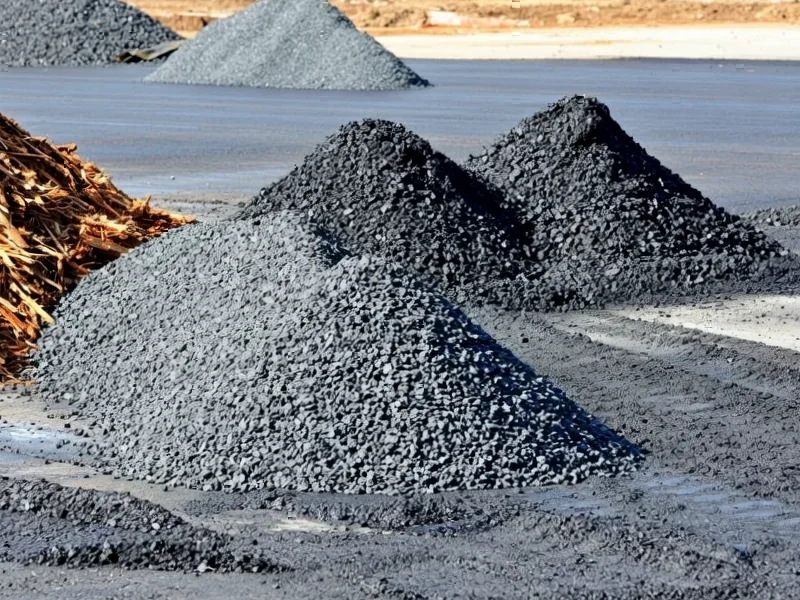According to Phys.org, Canada’s softwood lumber tariffs have climbed to 45% following recent increases of 10% on lumber and 25% on engineered wood products. UBC forestry professor Harry Nelson describes this escalation as pushing B.C.’s forestry sector into uncharted territory, threatening not just sawmills but also pulp and secondary manufacturing. The U.S. claims Canada subsidizes lumber through its stumpage system, while Canada and trade panels have consistently rejected this argument. B.C. Premier David Eby has characterized the situation as an existential crisis, with Canada having already paid approximately $10 billion in lumber duties to the U.S. This dramatic escalation signals a fundamental shift in cross-border forestry relations that demands deeper analysis.
The End of Guardrail Assumptions
What makes this tariff escalation particularly alarming is the collapse of long-held industry assumptions about U.S. protectionism limits. For decades, Canadian producers operated under the belief that while the U.S. would periodically impose tariffs, there were implicit boundaries to how far they would push. The 45% figure shatters that psychological safety net. This isn’t merely another cycle in the 40-year softwood dispute—it represents a structural shift in how the U.S. approaches trade enforcement. The timing couldn’t be worse, coming when B.C.’s forestry sector is already grappling with the compound effects of wildfire damage, mountain pine beetle devastation, and declining construction demand.
The Ripple Effect Through Forestry’s Supply Chain
While media attention focuses on sawmill closures, the real crisis extends throughout the entire forestry ecosystem. Sawmills function as the primary engine driving multiple interconnected industries. When they curtail operations, the impact cascades through pulp mills that rely on lower-value fiber byproducts, contractors who provide logging services, trucking companies that transport materials, and support services in rural communities. Unlike previous tariff cycles where larger producers could absorb temporary shocks, the current combination of ecological damage and unprecedented tariff levels creates a perfect storm that threatens the viability of the entire supply chain. Smaller contractors and support businesses operate with minimal financial buffers, making them particularly vulnerable to extended downtime.
The Urgent Need for Market Diversification
The crisis underscores B.C.’s dangerous overreliance on the U.S. market, which has historically absorbed the majority of the province’s lumber exports. This dependency creates systemic vulnerability that becomes apparent during tariff escalations. The Provincial Forest Advisory Council’s ongoing work on sector reform represents a critical opportunity to build a more resilient, diversified forestry economy. Beyond seeking alternative export markets in Asia and Europe, there’s growing potential for developing domestic value-added manufacturing that transforms raw lumber into higher-margin engineered wood products, specialized building components, and mass timber construction systems. Such diversification would not only reduce vulnerability to U.S. trade actions but could create more stable, higher-paying jobs within B.C.
The Human Cost Beyond Balance Sheets
The most concerning aspect of this crisis is its disproportionate impact on rural and Indigenous communities where forestry represents the primary economic foundation. These regions lack the economic diversity of urban centers, meaning mill closures trigger cascading social consequences including population decline, reduced municipal revenues, and strained social services. The federal loan guarantee program mentioned in the source material, while helpful for larger operators, often fails to reach the contractors, equipment operators, and small businesses that form the backbone of rural forestry economies. Effective response requires targeted support mechanisms designed specifically for these vulnerable segments of the workforce, including transition programs, retraining initiatives, and community economic development funding.
Where B.C. Forestry Goes From Here
Looking ahead 12-24 months, we’re likely to see accelerated consolidation within the industry as smaller operators struggle to survive the combination of tariffs and market pressures. This could paradoxically create opportunities for innovation as surviving companies seek more efficient operating models and explore new product lines. The crisis may also accelerate the transition toward value-added manufacturing and mass timber construction, which offers higher margins and greater insulation from commodity price fluctuations. However, the transition period will be painful, particularly for communities that lose their primary employers. The success of B.C.’s forestry future now depends on how effectively governments, industry, and communities can collaborate to build a more resilient, diversified sector that can withstand both economic shocks and ecological challenges.




